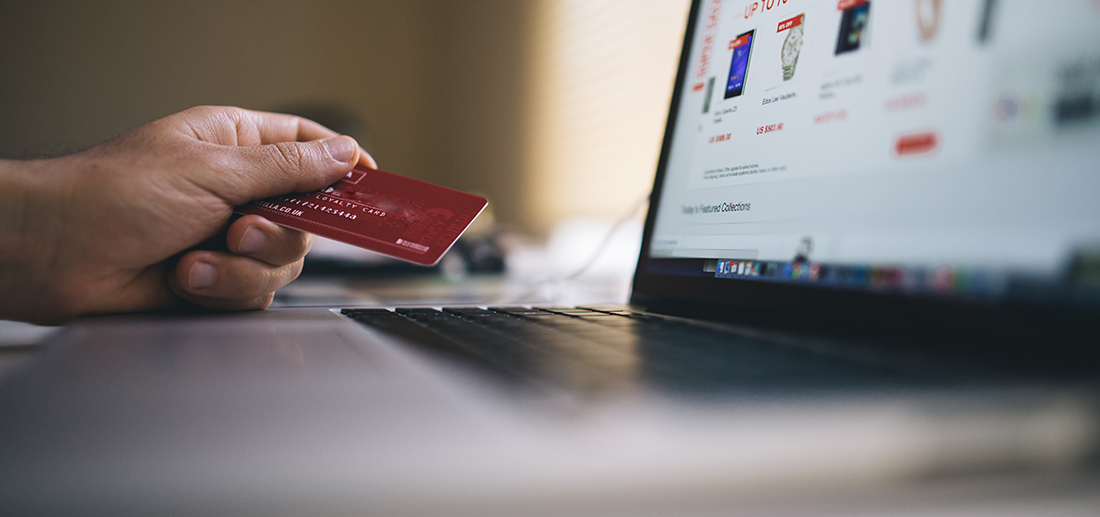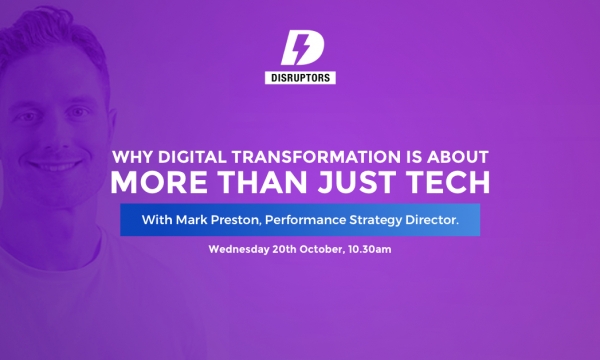As competition grows, margins squeeze and consumer confidence remains fragile, your ecommerce platforms have to work harder than ever.
We asked the Stickyeyes team what the recent lockdown has taught us, and what retailers need to do to make sure that they are deploying effective digital strategies across organic and paid search.
Optimise your feeds and let the search results be your shop window

Sarah Barker, Head of Biddable Media
The search results are increasingly becoming an extension of a brand’s ‘shop window’. As Google has evolved the results pages to become much more than just links and ad copy, visual elements play a much greater role in product discovery and brand engagement.
A growing amount of Google Shopping placement share is being awarded to Showcase Shopping ads – as much as 35% of the total available real estate in some categories and territories.
It makes it increasingly important for brands to ensure that they are leveraging those visual ad formats, which typically show for broader search terms, to maximise the performance and effectiveness of their campaigns. This is particularly the case in those upper-funnel searches.
In a similar vein, it is vital to ensure that your product feed is well optimised – particularly in the title element given that it is responsible for a high percentage of product matching.
Keep an eye on changing search trends and optimise your feed for new and emerging search terms.
Capitalise on changing search trends

Marcin Soltysik, SEO Lead
Capitalising on search trends is important at any time, but the COVID-19 lockdown has demonstrated just how those brands that can be agile and respond quickly can capitalise on shifts in consumer behaviour and attitude.
The lockdown saw consumer demands and behaviours change practically overnight, creating surges in demand for certain products that many retailers struggled to service. Those brands that were able to respond quickly to how the pandemic changed behaviour, many of which took cues from what happened abroad, were able to put themselves in a strong position to serve their customers when that demand peaked – either through increased stock, limits on certain items, and dedicated content and landing pages to capitalise on increased search activity.
It’s rare that such trends can emerge and swing as wildly as they did in the aftermath of the virus lockdown, but brands need to be alert to changing search habits. No retailer can afford to be blind to the rise in consumer interest in the environmental credentials or ethical providence of many products, for example.
Have a plan for when your stock runs out

Jack Clark, SEO Lead
Despite the best efforts of much of the retail industry, it was inevitable that in certain product lines, demand was going to out-strip supply. Whether it was toilet roll and hand sanitizer, through to hair clippers, bicycles and home gym equipment, stocks ran out faster than any supply chain could adapt to.
But how brands deal with stock shortages online, be it in a pandemic environment or otherwise, can make a big difference to both user experience and search visibility.
Ecommerce brands need to do what they can to avoid a stream of constant rule-based redirects from one page then back to another when a product is out of stock, as this will detract from the authority of the page and make for a confusing journey for search engines and just as importantly, your customers!
Instead, the page should remain live and simply be marked as ‘out of stock’ or ‘unavailable’, allowing for any authority going to that page to remain, rather than it being shifted about unnecessarily.
In those cases, pages should ideally allow the user to continue to engage in some form. For example, the page should suggest alternative or equivalent products that are more readily available. Another option would be to provide an opportunity for customers to pre-order the product (where feasible), or to request an alert for when the product does become available – which is also a great data-capture opportunity.
If a product is gone for good, that product page needs to go too. Ideally this page should be redirected on to a similar product or, if this is not possible, it should be clearly marked as ‘gone’ by using a 410 ‘Gone’ status code and removed from the internal link structure of the site. That will prevent a broken link from being crawled repeatedly.
Tools can help here as well. Search Ads 360, for example, has some great features such as inventory management that can automatically remove or pause your product feeds when items go out of stock.
Don’t forget the ongoing power of local

Jonathan Brown, Senior Content Editor
We’re at a point where the ability of consumers to interact with brands is being determined more so than usual by where they live.
As the easing of lockdown has allowed retailers to open their doors, some have been more tentative than others as they work out how they can put social distancing theory into practice. Most retailers have, over the course of the last three months, modified their opening hours, modified operations at certain stores (making them ‘click and collect only’), reduced in-store services or only reopened a fraction of their overall store network.
For consumers, it invariably creates confusion. Whilst much of the narrative nationally is of an unlocking and reopening of the economy, what that looks like on a local level may be quite different depending on where you live.
It makes local search and local ad targeting an extremely important communications tactic – not just during the pandemic, but beyond it.
If a retailer has stores in a location that is going to be a little later in reopening, the brand messaging needs to be mindful of that. If a location is offering limited services, be up front about that.
We have also seen brands acknowledging and responding to consumer apprehensions about large gatherings. Aldi, for example, recently served me a localised ad explaining when the quietest times were at my local store. It was a thoughtful and genuinely useful use of regional targeting.
This has applications in ordinary trading circumstances, as well as during the current, more restrictive environment. Whilst Google does share footfall data as part of the search results, considering how your marketing approach can contribute to managing footfall throughout the day has a lot of potential upside.
Let automation and AI play a bigger role in paid search and Google Shopping

Tony Booth, Paid Media Director
There is a big potential upside in placing greater levels of trust in Google’s automation tools. We know that many brands are reluctant to place greater levels of trust in Google’s automation tools but, as Google algorithms become more sophisticated, it’s a good opportunity to test a simpler, automated approach.
Some bid strategies no longer require any historic campaign data as they actually factor in wider search trends for your chosen keyword set. Therefore, at a time when search behaviour is constantly changing – perhaps faster than manual optimisations can adapt – you can leverage portfolio optimisation to better achieve business goals and react to the changing consumer landscape.
Dynamic targeting is one of those tactics that makes retail brands apprehensive, but we’ve seen much improved results where we have deployed it in retail campaigns, particularly when we combine this with automated bidding. The good news is that we can also segment the campaign by product categorisation to retain a good element of control.
Help your customers serve themselves

Mark Butler, Content Editor
Content has always been important in ecommerce strategy but what we have seen in the aftermath of the COVID-19 pandemic is a much greater demand for informational content that, in many respects, allows consumers to ‘self-serve’.
As barbers and hair salons have closed, we have seen huge increases in search volumes with an informational intent around hair care and styling. Without the professionals available, people have turned to Google to help with their head shaving and hair colouring, and brands with content around those topics are in prime position to cater to those audiences.
We have seen brands use content to keep their audiences engaged despite the fact that they have been prevented from serving them. Tying this content into engaging campaigns that will carry through beyond lockdown will help retailers and brands to keep their audiences engaged and put the brand in the spotlight when it comes to organic search.
Segment and monitor new and returning customers

Matthew Barnes, SEO Manager
Ecommerce websites tend to have a broad mix of new and returning users, but the knowledge and user path of a new user is very different to that of a returning one.
As a general rule, new users are much less likely to convert than returning customers, so tracking their behaviour in distinct segments can help you to get a better understanding of how effective your marketing strategy actually is.
With that insight, you can adapt your approach to suit each audience segment.
Personalisation could be a strong factor to guide new users into areas which have a higher propensity to perform a conversion action. Serving new customers highly converting products or for returning customers recently browsed or similar products to those recently purchased will help to continue the customer purchase cycle.
In terms of paid search, monitor the activity of new vs returning customers and assign varying return on ad spend (ROAS) and cost per acquisition (CPA) targets for each. This may seem a fairly standard point, but it is increasingly important during COVID in particular to ensure that, if growth does show signs of slowing down, you don’t pull back on channels that are driving real value.
Seize the opportunity of faceted navigation pages

Michael Hayden, Senior SEO Lead
Many ecommerce sites tend to overlook the opportunity in organic search that exists for faceted navigation pages. This is where users filter categories or product landing pages by variables such as colour, material, style, fit or brand.
These pages can often be viewed as ‘lower opportunity’ as individually they typically have lower associated search volume than higher level categories (for example, “jumpers” is a higher keyword opportunity than “red jumpers”, “slim fit jumpers” or “red slim fit jumpers”), and they can also cause headaches to index from a technical perspective.
But unlocking these pages with a careful and calculated indexation plan can present great cumulative opportunity. The facts that these pages have a lower keyword volume and that retailers tend not to focus on these pages means that there is much less competition in the search results. It means that these keywords can provide a “quick win” opportunity to drive what is, collectively, a large volume of much more qualified traffic.
Don’t let page speed be your downfall

Paul Johnson, Senior SEO Lead
This isn’t new advice (page speed, particularly on mobile devices, has been confirmed as a direct ranking factor in Google’s mobile search results since the “Mobile Speed Update” in July 2018), but it is still important to stress that having a fast site is essential to your SEO efforts.
As well as the SEO concerns, page speed can also have an impact on other factors that affect the performance of your site in organic results. For example, poor page speed can result in increased bounce rates, with studies showing that as page load time goes from one second to three seconds, the probability of a bounce increases by 32%. In turn, a high bounce rate sends a signal to Google that users aren’t finding what they are looking for.
Poor page speed also has an adverse impact on conversion rates. The same delay from one to three seconds to load a mobile page has been shown to reduce conversion rates by as much as 20%



